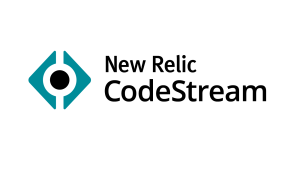We’re excited to share that CodeStream, a leading developer collaboration platform, is now a part of the New Relic family.
Both our teams have been working together for the last few months to build New Relic CodeStream, an observability solution for developers, available today. It’s a first-of-its-kind developer experience that connects application telemetry data directly to the relevant code inside the IDE, so developers can instrument, collaborate, and debug issues faster and easier than ever before. We’ve also been working with Microsoft to integrate New Relic CodeStream with Visual Studio, Visual Studio Code, GitHub, Azure, and Microsoft Teams.
A shared passion around solving problems for developers
From the moment we first connected, we bonded over the same passion. We’ve both been building software for decades and have come to realize the power of data to guide the difficult decisions and trade-offs we must make daily in our craft. We also agreed that developers often lack the essential data they need to drive those decisions and rely instead on subjective perspectives or, worse, a long and arduous alignment process.
Energized by this shared understanding, our teams worked on a joint product roadmap to make it easier for every developer to do their best work based on data, not opinions.
We founded CodeStream to transform how developers write, deploy, and improve their code by building the industry’s best collaboration platform. With New Relic, we found a team and company completely aligned with our mission and values to accelerate our innovation and expand our reach to the global developer community. I’m proud to share the powerful new integration between CodeStream and New Relic with engineers around the globe, and I’m excited about the continued innovations we will bring to market together.
As outlined in the CodeStream master plan, the team had already been on the mission to “make it easier to understand code by making it easier to talk about code.” Before the acquisition, that mission translated to one of the most popular and free open-source extensions for Visual Studio, Visual Studio Code, and JetBrains. As a collaboration tool in the IDE, CodeStream includes:
- Pull requests from GitHub, BitBucket, and GitLab
- Issue management from Jira, Trello, Asana, and nine other apps
- Code discussion that ties it all together, integrated with Slack, Microsoft Teams, email, and in-editor notifications
Building on what CodeStream already created, New Relic CodeStream is the first milestone in our journey as one company. Introduced today, New Relic CodeStream breaks down the barriers between code-focused developers and operations engineers.
Previously, observability tooling was coupled tightly to the operations function and constrained in stand-alone experiences designed for operations engineers. As a result, it was difficult for developers to apply critical production observations to resolve errors or issues or measure improvements. The preview we launched today addresses this problem by integrating CodeStream with New Relic One.
And we’re just getting started. In the coming months, we’ll deliver capabilities that bring more of New Relic One into the IDE to equip developers everywhere with the data they need where they need it. We’re excited for a future where the immense value of observability is woven seamlessly throughout the entire development lifecycle—empowering all developers with the foundational data they need to plan, build, deploy, and operate software.
We invite you to explore what you can do with New Relic CodeStream.
This blog post contains “forward-looking” statements, as that term is defined under the federal securities laws, including but not limited to statements regarding expected features and capabilities of New Relic CodeStream, including any anticipated benefits, results and future opportunities related thereto. The achievement or success of the matters covered by such forward-looking statements are based on New Relic’s current assumptions, expectations, and beliefs and are subject to substantial risks, uncertainties, assumptions, and changes in circumstances that may cause New Relic’s actual results, performance, or achievements to differ materially from those expressed or implied in any forward-looking statement. Further information on factors that could affect New Relic’s financial and other results and the forward-looking statements in this post is included in the filings New Relic makes with the SEC from time to time, including in New Relic’s most recent Form 10-Q, particularly under the captions “Risk Factors” and “Management’s Discussion and Analysis of Financial Condition and Results of Operations.” Copies of these documents may be obtained by visiting New Relic’s Investor Relations website at http://ir.newrelic.com or the SEC’s website at www.sec.gov. New Relic assumes no obligation and does not intend to update these forward-looking statements, except as required by law.
The views expressed on this blog are those of the author and do not necessarily reflect the views of New Relic. Any solutions offered by the author are environment-specific and not part of the commercial solutions or support offered by New Relic. Please join us exclusively at the Explorers Hub (discuss.newrelic.com) for questions and support related to this blog post. This blog may contain links to content on third-party sites. By providing such links, New Relic does not adopt, guarantee, approve or endorse the information, views or products available on such sites.




